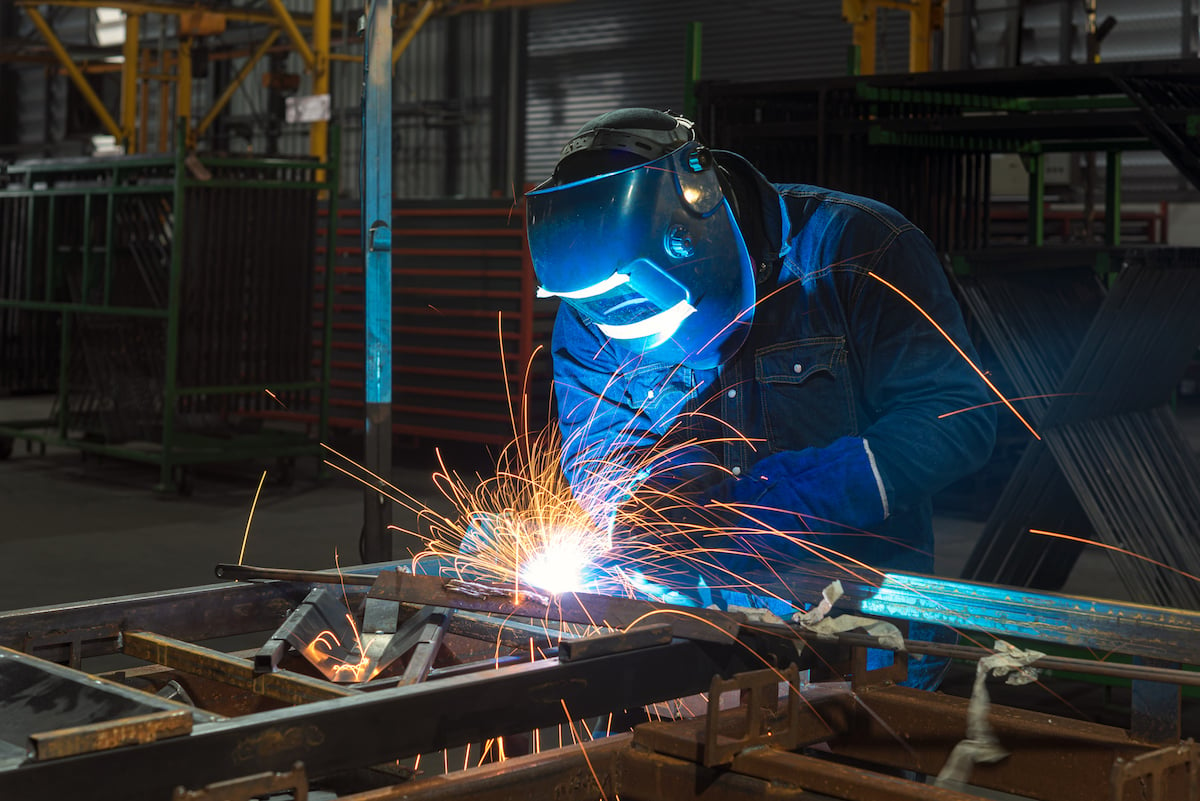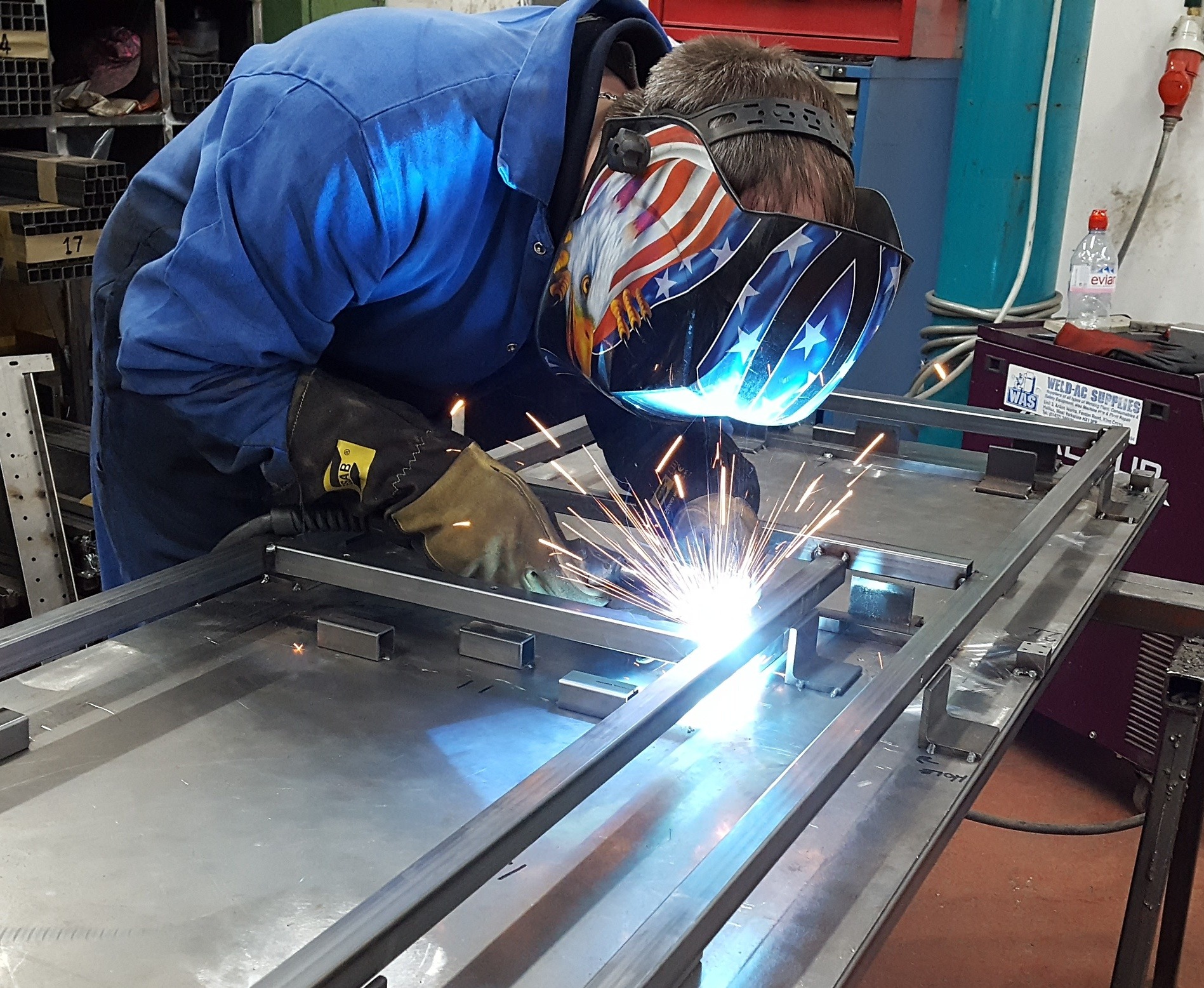Common Welding Fixing Issues and Exactly How to Address Them Properly
Welding repairs commonly come across a variety of problems that can jeopardize the integrity of the end product. Common problems consist of inadequate penetration, porosity, and imbalance, amongst others. Each flaw presents distinct obstacles that require details approaches for resolution. Comprehending these issues is crucial for welders intending to boost their results and abilities. This discussion will discover these common welding repair service concerns and effective approaches to address them.
Insufficient Infiltration
Inadequate infiltration happens when the weld steel stops working to totally fuse with the base product, causing weak joints and prospective architectural failings. This concern commonly originates from not enough warmth input, incorrect electrode angle, or inappropriate welding speed. Welders might experience inadequate penetration because of a mistake of the necessary specifications for a particular product thickness or kind. Additionally, contamination on the base product's surface area can impede effective bonding, exacerbating the trouble. To address poor infiltration, welders should guarantee appropriate setups on their equipment and preserve a tidy job surface area. Regular examination of welds is suggested to identify any deficiencies early, enabling for timely corrections and the prevention of endangered structural integrity in welded settings up.
Porosity
Porosity is an usual defect in bonded joints that shows up as little gas bubbles entraped within the weld steel. This issue can compromise the integrity of the weld, leading to decreased strength and prospective failing under anxiety. Belgrade. Porosity commonly emerges from contamination, dampness, or inappropriate welding methods, which enable gases to run away into the molten weld pool. To attend to porosity, welders should ensure appropriate surface area prep work, keep a clean working environment, and make use of appropriate welding specifications. Furthermore, choosing the right filler product and securing gas can reduce gas entrapment. Regular examination and screening of welds can aid recognize porosity early, assuring timely corrective activities are taken, consequently protecting the high quality and dependability of the welded structure
Misalignment
Misalignment in welding can develop from various factors, consisting of improper configuration and thermal development. Recognizing the source is essential for effective resolution. Numerous modification techniques are readily available to realign parts and ensure structural stability.
Sources of Imbalance
Welding imbalance commonly originates from a selection of underlying issues that can endanger architectural integrity. One main cause is improper fit-up of elements before welding, which can lead to gaps and uneven surfaces. Variants in thermal growth throughout the welding procedure can also cause distortion, especially if the products being joined have various coefficients of expansion. Furthermore, poor fixturing and clamping may fall short to hold components safely in position, causing activity during welding. Badly conserved equipment, including welding machines and tools, might present incongruities in the weld bead, additional adding to imbalance. Driver error, stemming from inadequate training or experience, can additionally play a substantial function in developing misaligned welds.

Adjustment Strategies Readily Available
Dealing with misalignment properly requires a mix of restorative strategies customized to the certain concerns at hand. One usual technique is the use of fixtures or jigs to hold parts in the correct placement during welding, making sure consistent positioning. Furthermore, preheating the products can assist minimize distortion and enhance fit-up. For substantial imbalance, mechanical realignment techniques, such as making use of hydraulic jacks or clamps, can be utilized to fix the placement prior to welding. Post-weld heat therapy might additionally be required to relieve stresses brought on by imbalance. Lastly, careful evaluation and change during the arrangement stage can avoid imbalance issues from ending up being substantial problems, advertising a smoother welding process and improving total architectural stability.
Distortion
Distortion is a typical obstacle in welding that can arise from numerous factors, including irregular heating and air conditioning. Understanding the sources of distortion is important for implementing efficient prevention methods. Addressing this problem not only improves structural stability but also boosts the overall quality of the weld.
Reasons for Distortion
When based on the extreme warm of welding, products frequently go through changes that can result in distortion. This sensation mainly emerges from thermal growth and tightening during the welding process. As the weld location warms up, the product expands; upon cooling, it acquires, which can produce inner stress and anxieties. Additionally, unequal heating across a workpiece can intensify these tensions, causing bending or bending. The sort of material also plays a significant role; steels with differing thermal conductivity and coefficients of growth may respond differently, resulting in unpredictable distortions. Poor joint design and insufficient fixturing can contribute to imbalance throughout welding, enhancing the probability of distortion. Comprehending these causes is necessary for effective welding fixing and avoidance approaches.
Prevention Techniques
Reliable avoidance strategies for distortion during welding focus on controlling heat input and guaranteeing correct joint layout. Maintaining a constant heat input assists to lessen thermal development and tightening, which can bring about distortion. Using strategies such as pre-heating the work surface can additionally decrease the temperature level gradient, promoting consistent heating. Furthermore, choosing proper joint designs, such as T-joints or lap joints, can improve security and decrease anxiety focus. Carrying out correct fixturing to protect the workpieces in place better help in keeping placement throughout the welding process. Staggered welding sequences can disperse heat a lot more uniformly, have a peek at these guys preventing localized distortion. By applying these strategies, welders can greatly decrease the possibility of distortion and improve the total high quality of their welds.
Cracking
Cracking is a typical problem experienced in welding repair services, often arising from different factors such as inappropriate cooling prices, material option, or stainless steel welding wire poor joint preparation. The occurrence of splits can considerably jeopardize the integrity of the weld, leading to possible failures throughout procedure. To resolve this concern, welders should initially assess the root creates, guaranteeing that products are suitable and suitably selected for the particular application. Additionally, regulating the cooling price throughout the welding procedure is vital; fast air conditioning can cause anxiety and result in fracturing. Correct joint style and prep work likewise contribute to reducing the danger. Executing these techniques can improve weld top quality and toughness, ultimately lowering the likelihood of splitting in finished weldments.

Insufficient Combination
A considerable concern in welding repairs is insufficient fusion, which takes place when the weld steel does not effectively bond with the base product or previous weld passes - Fabrication. This defect can lead to weaknesses in the joint, potentially compromising the stability of the welded structure. Aspects adding to insufficient blend include insufficient warm input, inappropriate welding technique, and contamination of the surfaces being signed up with. To address this issue properly, welders need to ensure proper pre-weld cleansing and surface prep work, in addition to readjust their welding specifications to accomplish adequate infiltration and fusion. Normal assessment throughout the welding process can likewise aid identify incomplete fusion early, enabling timely rehabilitative steps to boost the general quality of the weld
Overheating
While welding repairs can enhance architectural honesty, overheating provides a significant challenge that can cause material destruction. Extreme heat during welding can change the mechanical residential or commercial properties of metals, resulting in minimized stamina, boosted brittleness, and bending. This sensation is especially essential in high-stress applications where structural reliability is paramount. Determining overheating his response can involve visual assessments for staining or distortion, as well as keeping track of temperature during the welding process. To alleviate the dangers connected with getting too hot, welders must use ideal methods, such as controlling heat input, readjusting traveling rate, and using appropriate filler materials. Additionally, carrying out pre- and post-weld warmth therapies can help recover product residential properties and enhance the general top quality of the repair, ensuring lasting efficiency and security.
Regularly Asked Inquiries
What Are the Common Signs of a Welding Problem?

Exactly How Can I Test My Welds for Top quality?
To test welds for quality, one can utilize aesthetic examinations, ultrasonic screening, and radiographic techniques. Each technique guarantees structural integrity, identifies defects, and verifies adherence to defined requirements, ultimately enhancing the integrity of the welded joints.
What Safety Preventative Measures Should I Take While Welding?
When welding, one need to focus on safety by wearing appropriate personal safety devices, ensuring appropriate ventilation, protecting flammable materials away, keeping a tidy work space, and recognizing environments to avoid crashes and injuries.
Can I Repair a Weld Without Redoing the Entire Joint?
Repairing a weld without remodeling the entire joint is possible, relying on the damage (Montana Mobile Welding and Repair). Techniques such as grinding, including filler product, or utilizing a welding process can effectively attend to particular imperfections while protecting the bordering structure
What Devices Are Vital for Efficient Welding Services?
Important tools for reliable welding repairs consist of a welding equipment, cord brush, mill, protective equipment, clamps, and filler products. Each device plays a vital duty in ensuring high quality and security during the repair work procedure. Porosity normally arises from contamination, wetness, or improper welding strategies, which permit gases to run away into the molten weld swimming pool. Improperly conserved devices, consisting of welding equipments and tools, might introduce inconsistencies in the weld bead, further adding to misalignment. When subjected to the extreme warmth of welding, materials frequently go through changes that can lead to distortion. Cracking is an usual concern run into in welding repairs, frequently resulting from numerous variables such as incorrect cooling rates, product choice, or insufficient joint prep work. A substantial problem in welding repair services is insufficient blend, which happens when the weld metal does not properly bond with the base product or previous weld passes.